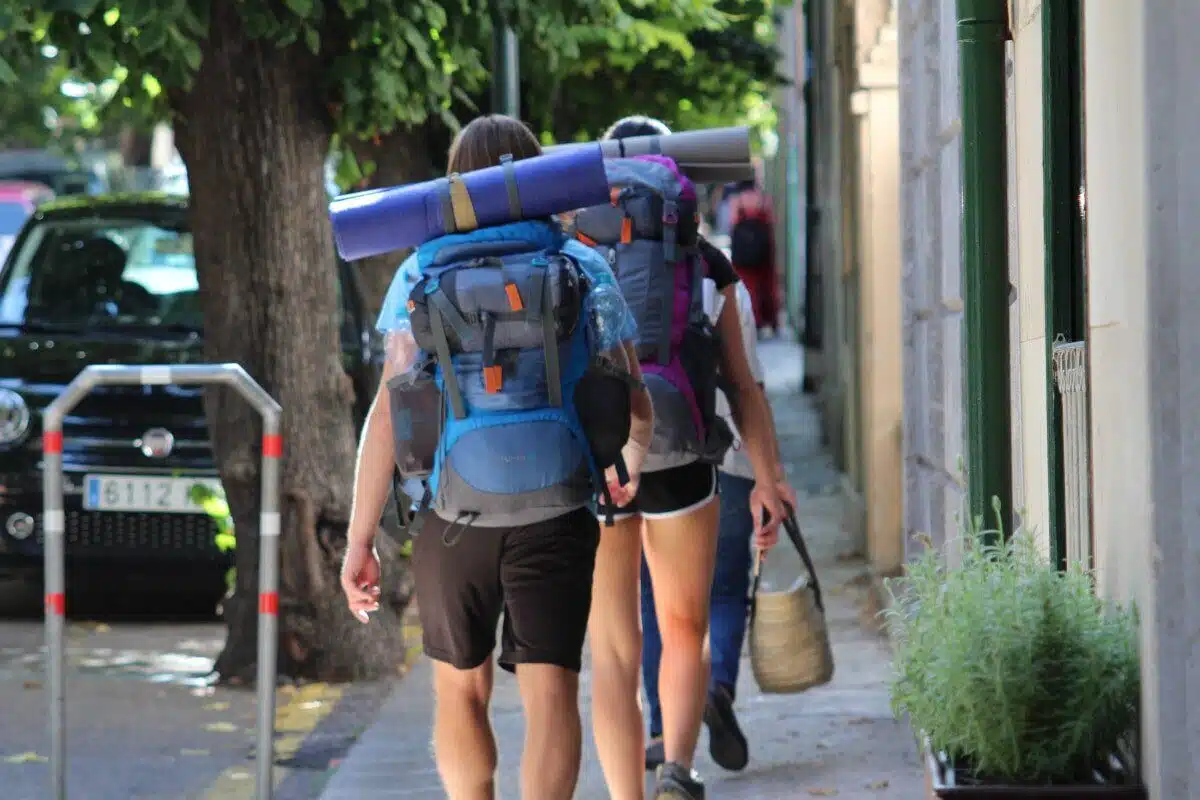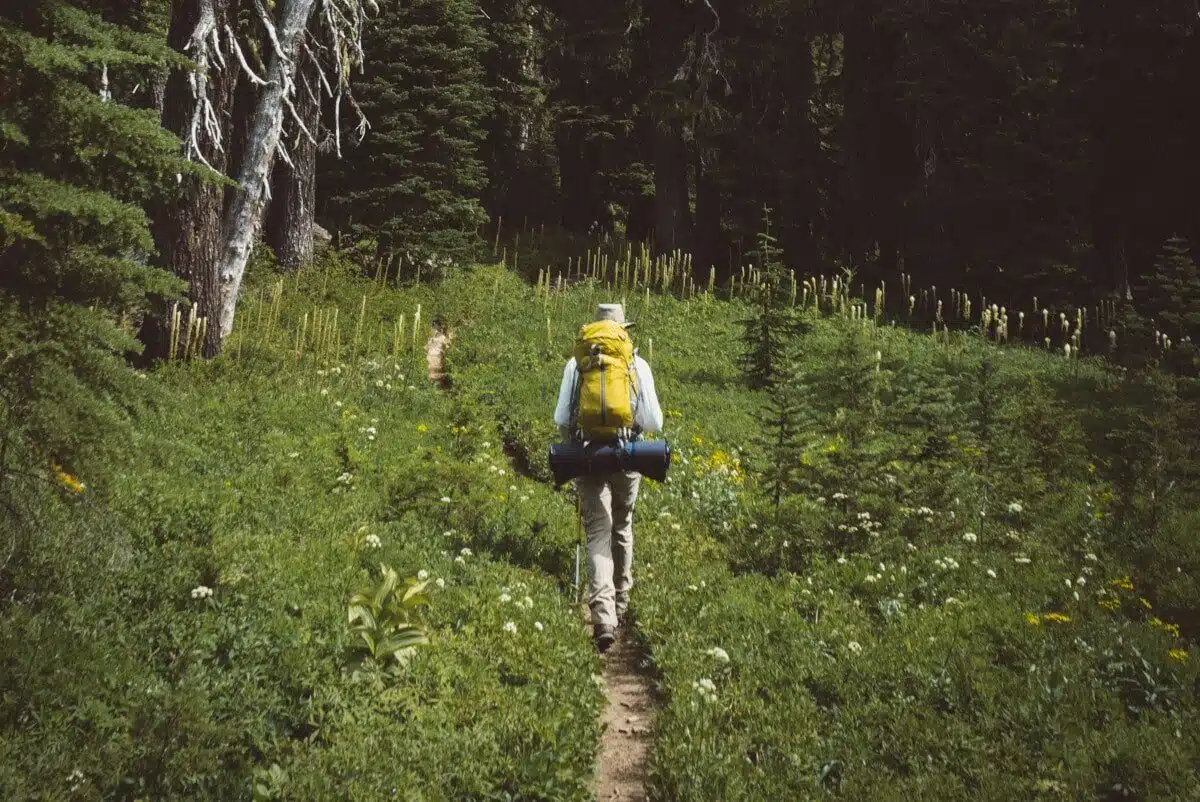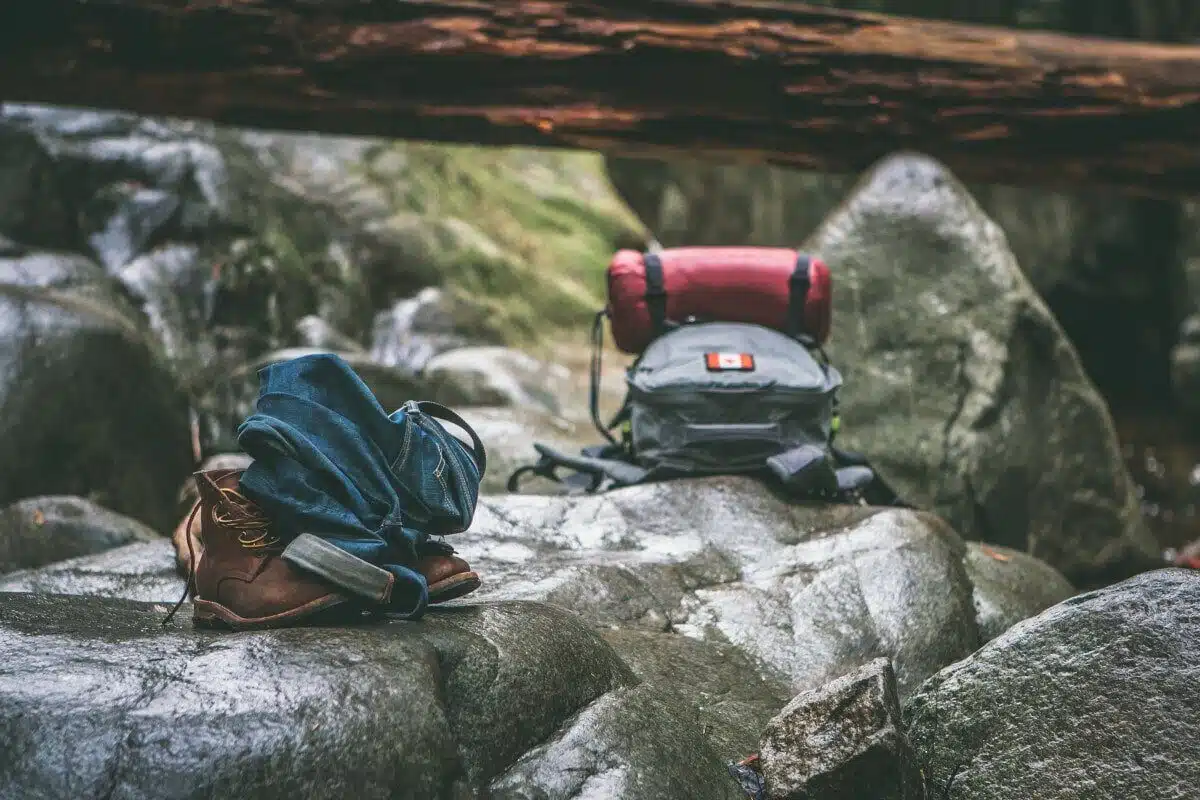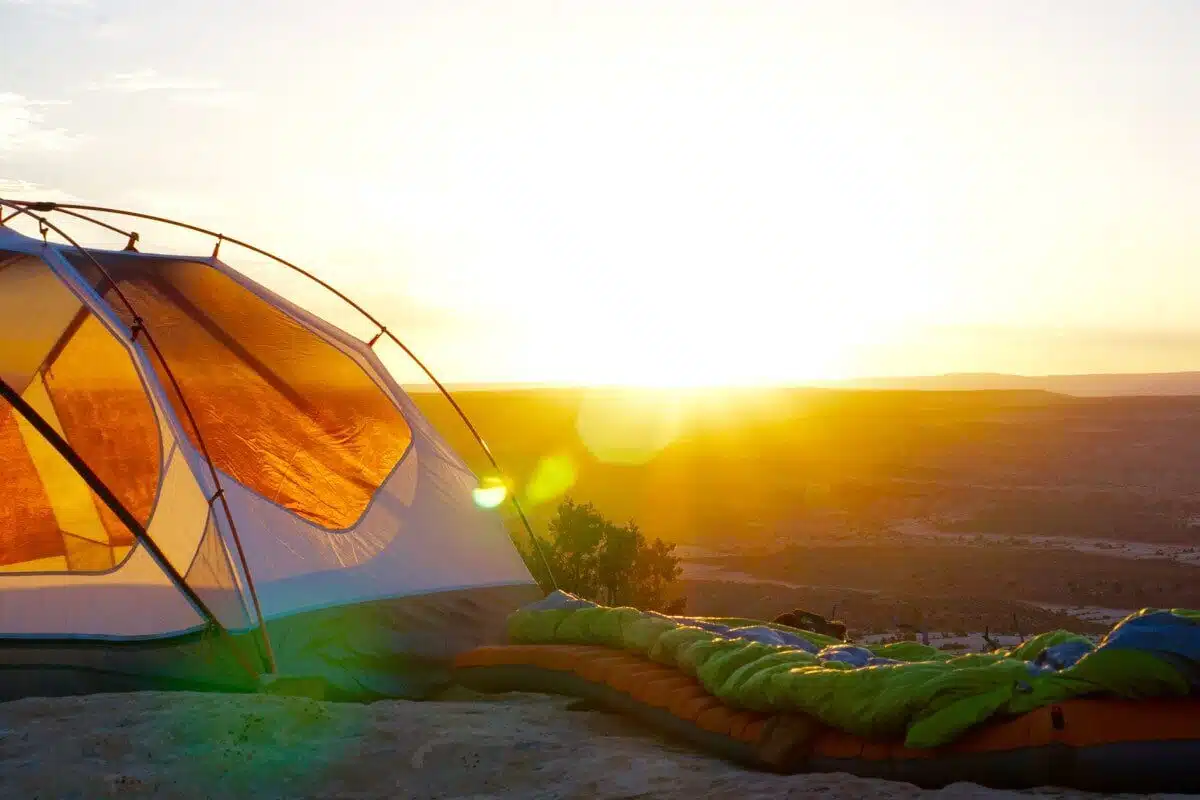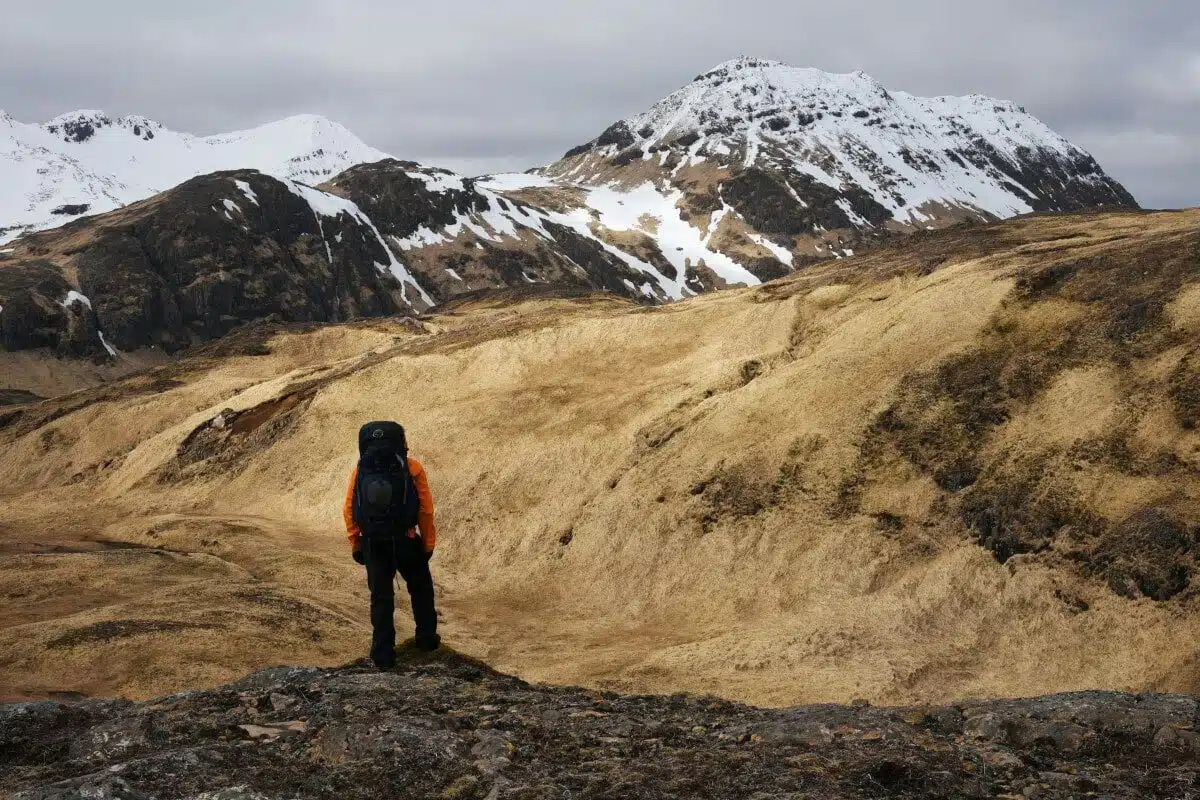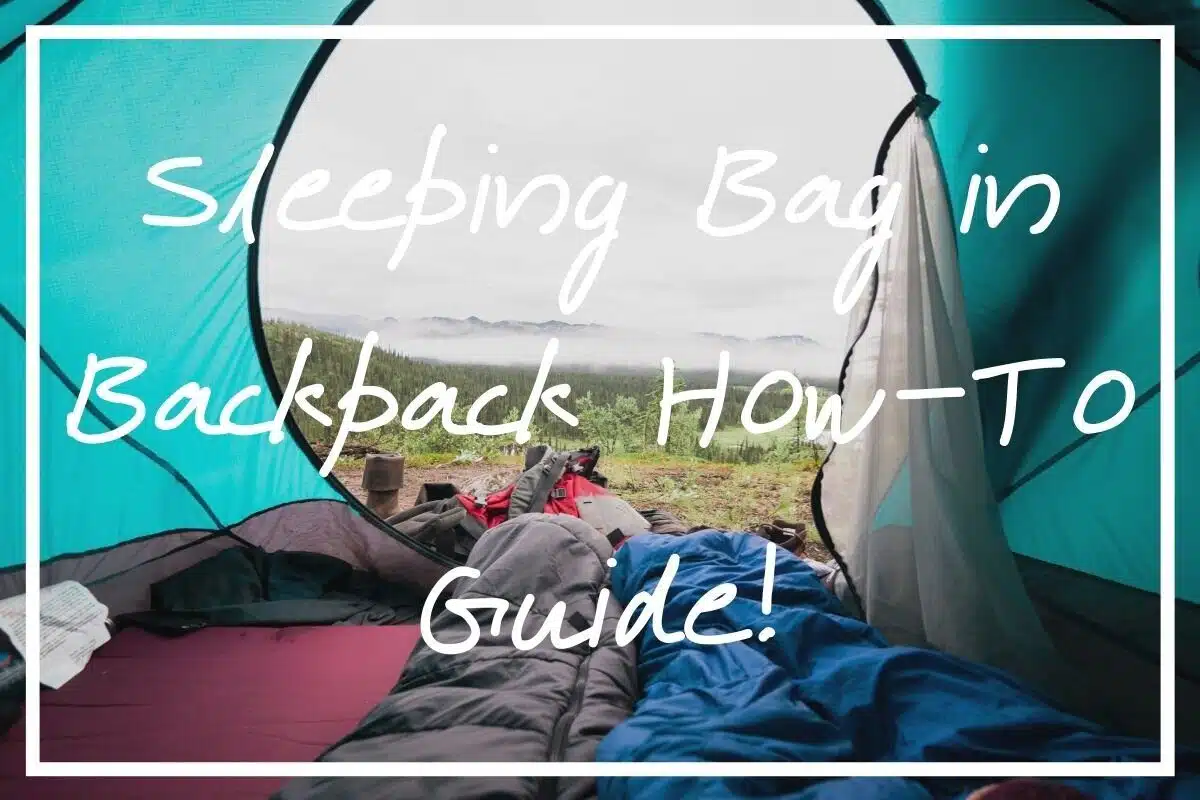
I hope you find value in this sleeping bag in backpack how-to guide!
A good sleeping bag can (literally) be a lifesaver when you’re backpacking or camping.
I mean, it keeps the cold at bay throughout the night and helps you get some much-needed shut-eye in the process! Unless it’s the dead of summer, it’s hard to imagine sleeping outside without one.
But you’re faced with a quandary:
Sleeping bags aren’t small and you have limited space at your disposal. How on earth do you fit a sleeping bag into a backpack along with all your other gear?!
Having faced this physics-defying task numerous times before, I decided to put a ‘sleeping bag in backpack how-to guide’ together to help anyone who’s unsure how to proceed!
Wondering how to attach a sleeping bag to your backpack or fit the wretched thing inside?
Keep reading for every solution I’ve either tried myself, heard about in passing, or come across on the road…with some handy tips thrown in for good measure!
1. Squeeze It Into the Sleeping Bag Compartment
Most modern-day backpacks (with a capacity of 40L and up) have actual sleeping bag compartments at the bottom. To state the obvious, you could always try squeezing your bag in there, first!
Assuming you keep the outside of your backpack relatively dry, the sleeping bag will stay safe and sound inside and you’ll stop it from getting damp throughout the day too.
An added bonus of fitting your sleeping bag in this designated compartment is the ‘cushioning effect’ it provides.
You end up with a soft, shock-absorbing base, which is great for a) sitting on whenever you want a break from hiking and b) protecting any fragile items you’re carrying in the central compartment.
The only issue? Space.
When you’re carrying lots of other stuff, that bottom section will fill up fast. You might not have the luxury of being able to fit a backpack inside.
2. Squeeze It Inside Anyway Possible!
No special sleeping bag compartment but a little bit of space left inside your pack nonetheless?
I’d try squishing, squashing, and squeezing it inside anyway.
Once again, if it’ll fit, the bottom of the pack’s a good place for it. Put this inside your pack first and then channel your inner Tetris professional and fit everything else on top of it.
You might have to cut back on other unnecessary items, but, in my opinion, keeping your sleeping bag dry is a major advantage that justifies sacrifice elsewhere.
One problem with this approach is accessibility, though. With a top-loading backpack and no sleeping bag compartment at its base, you’ll have to unload and repack your other gear in order to get your hands on the sleeping bag.
It’s not the end of the world, but it’ll feel like a hassle when you’re tired and/or in a hurry to set up camp.
Wondering how to attach a sleeping bag to your backpack? Use the lid!
Related Posts You Might Like:
- What to Wear Hiking!
- How to Boil Water Camping
- The Best Sleeping Bags Under $100
- The Best Instant Tents for Camping
- The Best 12-Person Tents
- The Best Backpacks for Survival
- The Best Hiking Backpacks Under $100
3. Fit It Beneath the Backpack Lid
Top-loading backpacks often have a lid that covers the opening to the main compartment. This lid is attached via vertical straps to the pack itself. Unclip the straps, remove the lid, and you gain access to the drawstring-sealed section of material that covers everything inside.
Some people choose to fit their sleeping bag beneath the lid, in the gap between it and the drawstring section I just mentioned. You’d place it here, pull the straps over the top, clip them into position, and tighten the straps to hold the bag in position.
This is an effective solution to the problem- especially for smaller sleeping bags.
You don’t have to squeeze the bag inside your backpack. And nor do you have the hassle of attaching it via straps or cords.
The only problem you face is if it rains. Not only will any uncovered section of the sleeping bag get wet, but the water could leak into the backpack itself. That’s why (if you do use this method) you should always put a rain cover over the top in bad weather.
4. Tie It on Using Backpack Sleeping Bag Straps
Does your sleeping bag have a stuff sack or carry bag with straps on the outside? If so, you can use these to attach it to your backpack with relative ease.
Imagine that your backpack has two loops on the top or bottom. Disconnect the straps on the sleeping bag, thread them through those backpack loops, and then reconnect them to the bag. Pull them tight and voila, your sleeping bag will be attached to the backpack!
Make sure the straps are tight enough so that the bag’s flush against the backpack. This should stop it from bouncing around and unbalancing the pack as you carry it.
A perfect example of a backpack with sleeping bag tied on using straps.
5. Utilize Backpack Straps (My #1 Backpack With Sleeping Bag Method!)
The previous method’s all well and good if your sleeping bag has straps. But what if it doesn’t? Sure, you could buy some separately (more on this later).
To save some cash, though, try using the straps and buckles you find on the pack itself.
For instance, most backpacks have some sort of compression straps on either the side, front, top, or bottom. They connect via buckles, pull tight, and provide newfound stability and security (not to mention the ability to compress the backpack to a smaller size) as a result.
They’re also an ideal place to connect a sleeping bag!
Unbuckle them, loosen them, wrap them around the bag, and then buckle them shut. Pull the straps tight and you’re good to go. Of course, if the sleeping bag has straps too, then you can repeat this process but thread the backpack straps around the sleeping bag straps instead (this is helpful when the backpack straps aren’t long enough to extend the whole way around your sleeping bag!). Either way, you connect one to the other.
6. Try Using Carabiners
Carabiners will help here too. These devices are purpose-made for clipping one thing to another! Connecting a couple of carabiners to the outside of your backpack’s ideal for hanging all sorts of gear from it, including, if necessary, a sleeping bag!
Imagine a backpack with two loops on the bottom and a sleeping bag with compression straps on the outside. With carabiners on either loop, you could hook them to either end of one of the bag’s straps. The only downside?
It’d bounce up and down as you walked.
In an ideal world, then, you’d have a third carabiner clipped to something at the centre of the front of the backpack. You’d then lift the sleeping bag up (while it’s still attached to the first two carabiners) and hook the carabiner through another of the bag’s straps.
With all three carabiners in place, it’d be unable to wobble up, down, left, or right.
Any straps in play are usually the best way to attach a sleeping bag to backpack. If you don’t have any, try making your own!
7. Make DIY Webbing
If neither your sleeping bag nor backpack have straps, then it’s time to get creative. Grab yourself some twine, or an old belt, or anything else you could use to connect one item to the other!
Let’s start with the twine*…
Roll up your sleeping bag, take 3 to 4 pieces of twine, and then tie each one around the bag to secure it in position. Top tip: keep enough slack in the twine so you can fit each loop back around the sleeping bag after you’ve used it (and have to tie it up again)!
…Alternatively, don’t tie the knots too tightly. That way, you could simply untie, retie, and reuse them at will.
With your sleeping bag wrapped up and secured with your loops of twine, you’ve now got a series of anchor points through/on which you can slip/attach something on your backpack.
If it were me, I’d use the buckles on my backpack that attach the lid to the body. Pull the lid over the top of your backpack, thread the straps/buckles underneath the twine of your sleeping bag, and then clip it shut. Assuming those straps are tight enough, the bag shouldn’t wobble around too much on there!
*For a more durable, longer-lasting solution, you could put an old belt (or two) around the sleeping bag in the same way. Old shoe laces or rope would work as well.
8. Tie It to External Frame Backpacks
For anyone with an external frame backpack, you should be able to attach your sleeping bag with relative ease. After all, these things often have designated tie points on the bottom and/or stable sections of the frame that are ideal for clipping gear onto!
Whether you use ropes, straps, carabiners, or a combination of all three, you’ll have your sleeping bag on in no time. The only thing worth keeping in mind is the need for it to be tight/flush against the frame. Any excess slack will cause it to move and bounce around, unbalancing the backpack (which is bad news for your back…).
Wondering how to pack a sleeping bag into a backpack? If it won’t fit inside, buy some compressions straps to help!
9. Invest In Compression Straps
Fitting your sleeping bag in a backpack or attaching it to the outside will both be much easier if you buy some compression straps. You can wrap the sleeping bag in these handy contraptions, cinch them shut and pull them tight.
Putting one around the side and another around the top should compress your sleeping bag down to a more manageable size!
Even if it’s still too large to fit in your pack, those straps can be threaded through any loops/straps on the backpack itself to attach it to the outside.
You can also find specific compression sacks as well- some of which are custom-made for compressing sleeping bags. If your current bag doesn’t already have one, then I’d look into getting one of these too. Fitting around either end, they have straps that pull tight, squeezing the bag down to size.
10. Buy a Smaller Sleeping Bag!
One way to sidestep the issue of space is to invest in a new and smaller sleeping bag. It’ll take up less room in your pack and, with any luck, leave enough space for your other items in the process. It should also be lighter to carry!
Just remember to keep the weather/temperature in mind too. A small sleeping bag’s great for saving space in your pack, but it’s unlikely to be warm enough for winter nights! In a choice between space and warmth, pick warmth every time.
A backpack with sleeping bag straps is usually the easiest way to connect one to the other.
11. Skip the Sleeping Bag Altogether
Do you really need a sleeping bag for your trip? You may not.
For instance, in warmer weather you could get away with wearing all of your clothes instead. Heck, in some countries and/or at certain times of year, you might be too hot with anything more than a sleeping pad to sleep on and a t-shirt to sleep in!
And if you don’t have the luxury of such warm climates, another option is to ditch the sleeping bag in favour of a blanket. Small and light, yet still effective insulators, they’ll fit more easily in your backpack and help you stay warm as well.
12. Learn to Pack Like a Minimalist
Okay, let’s imagine a situation where you definitely need a sleeping bag. You know it’s going to be cold at night and can’t afford to go without the first-rate insulation it provides.
A blanket won’t cut the mustard and you’d freeze if you only wore clothes.
If you’re unwilling and/or unable to attach the sleeping bag to your backpack, I’d be tempted just to take less stuff. I’d ditch that extra sweater, forget the second pair of spare socks, and take a water filtration bottle so I could drink from water sources I found on the way (meaning I didn’t have to pack so much fluid up front).
In other words, I’d free up space elsewhere to make room for my sleeping bag!
Remember This Sleeping Bag in Backpack How-To Guide
Taking a sleeping bag into the great outdoors can be a pain in the butt when you only have a backpack to transport your gear.
It’s an essential bit of kit, but its bulkiness causes all sorts of trouble!
Fitting in inside your backpack (alongside everything else) can feel impossible and attaching it to the outside can seem cumbersome…not to mention foolish if the weather’s bad.
Let’s face it, there’s no ideal solution to this problem! With any luck, though, this sleeping bag in backpack how-to guide has shed some light on the situation. Keep these ideas in mind and you should be able to attach a sleeping bag to your backpack with less trouble!
